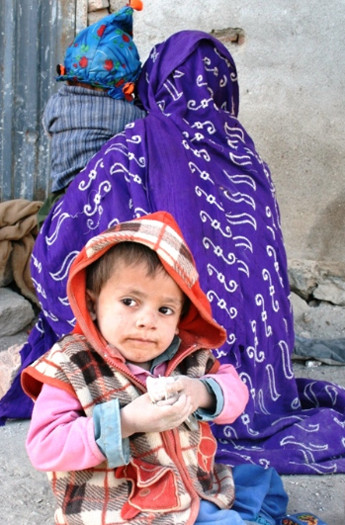Almost a decade of donor funded health projects has resulted in a marginal reduction in maternal and child mortality, according to new estimates set out in a UN report on maternal health.

Despite billions of dollars spent over the past nine years, Afghanistan has high maternal and infant mortality rates. (Photo: Akmal Dawi/IRIN)
Maternal deaths have fallen from 1,600 per 100,000 live births in 2001 to 1,400 in 2010, still the second highest in the world.
The infant mortality rate dropped from 165 per 1,000 live births in 2001 to 111 in 2008, while the under-five mortality rate fell from 257 to 165 per 1,000, according to the report Trends in Maternal Mortality 1990-2008.
The inter-agency report, based on extrapolations from various available data, was presented at the UN Summit on the Millennium Development Goals (MDGs) in New York on 20-22 September.
Progress had been achieved through a rapid expansion of healthcare services to about 80 percent of the country and enhanced immunization campaigns over the past few years, said Health Ministry officials.
Despite this progress, Afghanistan is still the world’s worst place to be born. The UN Children’s Fund (UNICEF) ranked the country the worst of 202 countries in terms of maternal, infant and child mortality last year.
UNICEF said 1 in 8 Afghan women faced a lifetime risk of death from causes related to pregnancy and childbirth in 2009 which, according to the report, has improved to 1 in 11.
“Unimpressive”
“Our progress in curbing maternal mortality has been slow and unimpressive,” Suraya Dalil, the health minister, told IRIN, adding that progress on children’s health had been satisfactory.
Illiteracy among women, lack of roads, a shortage of female healthcare providers, poor quality health services and food insecurity are the main impediments to improved maternal health, she said.
The country is committed to reducing maternal mortality to 800 per 100,000 live births by 2015 and to 400 by 2020, according to Afghanistan’s MDG 5.
Under-five mortality should be reduced to 127 per 1,000 in 2015, states MDG 4.
Progress in reducing maternal mortality has been rated as 1 percent per year, far below the recommended 5 percent required to meet MDG 5, health experts said.
“This is a positive trend but the progress is not fast,” said Peter Graaff, country representative of the UN World Health Organization (WHO).
Low per capita health spending
Despite a 54 percent increase in public health spending in the past six years (from US$163.6 million in 2004 to $277.7 million in 2009), Afghanistan’s $10.92 per capita per year spending on health is considered lower than the WHO recommended level of $15-30.
It is safe to say that real needs in this country are among the greatest in the world, said WHO’s Graaff.
The public health sector has been bankrolled by generous donors such as the World Bank, the USA and the European Union over the past nine years, but continued assistance will be needed just to sustain the modest gains, said Health Minister Dalil.
Despite the global economic downturn, foreign aid to Afghanistan has remained steady.



